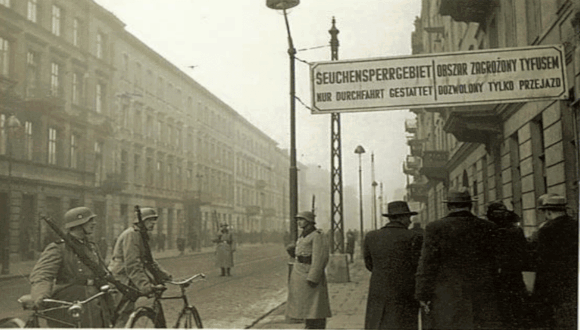International Holocaust Remembrance Day 27.01.2022
As the COVID-19 pandemic confronts us with scientific, medical, and ethical dilemmas, it may be important to remember that Jewish and non-Jewish doctors and scientists faced even more difficult situations during the Second World War. During the Holocaust, the dire living conditions in the ghettos meant that they became a breeding ground for epidemics. Yet, even under such adverse conditions, in some instances Jewish doctors managed to save lives by secretly vaccinating the ghettos’ inhabitants. Thus, vaccination became a way of resisting Nazi persecution.
Dr. Ludwik Hirszfeld was a Polish-Jewish microbiologist and serologist, and the co-discoverer (along with Dr. Emil Von Dungern) of the inheritance of the A-B-O blood groups. When the First World War broke out in August 1914, he volunteered for the Serbian Army. Along with his wife Hanna, a physician, and Serbian medical personnel, he attempted to stop the advance of the typhoid fever epidemic by introducing means of mass disinfection.[1]. After the end of the First World War, the Hirszfelds returned to Warsaw. Ludwik established a serum institute and soon became deputy director and scientific head of the State Institute of Hygiene in Warsaw. In 1924, he was appointed professor at the University of Warsaw. After the occupation of Poland by Germany in fall of 1939, Hirszfeld was dismissed from the university and the Hygiene Institute. At the beginning of 1940, he and his family were forced to move to the Warsaw Ghetto. [2].
In his autobiography, Hirszfeld describes how in late 1941, typhoid fever broke out in the Warsaw ghetto. As he was familiar with the disease from the First World War, he knew that in addition to the harsh living conditions, such an epidemic posed a serious threat to survival in the ghetto. Thousands of cases were reported that winter, and a year later, it was estimated that 70 percent of ghetto residents had been infected. Despite the constant threat of death, Hirszfeld took upon himself to become chairman of the ghetto’s health council and set up a small laboratory to study the fever. By doing so, he managed to improve the health conditions in the ghetto and to secretly vaccinate people, using a vaccine developed and smuggled into the ghetto by Prof. Rudolf Weigl.
Hirszfeld described his shock at the Germans' reaction to the outbreak of typhoid fever and their handling of the epidemic. Initially, the German authorities tried to fight the disease by requiring Jews to submit to delousing baths and quarantine measures. However, these procedures were impractical and punitive. Delousing meant standing naked in the freezing cold while one's apartment was inspected and often robbed, as well as handing over valuable clothes that would likely be ruined by strong chemicals. Later, the German authorities ordered that to prevent the spread of the disease, Jews trying to leave the ghetto were to be shot. In addition, signs in the ghetto urged anyone who discovered lice on himself to report to a physician and required registering any case of fever. Hirszfeld noted in his biography that these measures were useless and cruel. "But since the object in this case was to destroy the Jews and not the epidemic as such," he added, "the quarantines proved quite useful”.[3]
Ludwik and Hanna Hirszfeld managed to escape from the ghetto a few months before it was liquidated, and they survived the war hiding in the country house of Polish aristocrats.
To view an excerpt from Dr. Hirszfeld’s autobiography on typhoid fever in the Warsaw Ghetto, click here.
[1] Czerwinski, M., Kaczmarek, R., & Glensk, U. (2021). Ludwik Hirszfeld: A pioneer of transfusion and immunology during the world wars and beyond. Vox Sanguinis. https://doi.org/10.1111/vox.13214
[2] Ludwik and Hanka Hirszfeld: Pioneers in Blood Typing. (2017). KUMC. https://www.kumc.edu/school-of-medicine/academics/departments/history-and-philosophy-of-medicine/archives/wwi/essays/biography/hirszfelds.html
[3] Allen, A. (2014, August 5). Killing in the Name of Cleanliness. Slate Magazine. https://slate.com/technology/2014/08/typhus-and-lice-in-jewish-ghettos-nazi-doctors-perverse-groupthink.html


